My local grocery store recently started carrying specialty bars of chocolate
infused with unusual ingredients: curry powder and coconut; plums, walnuts, and
cardamom; even bacon bits. These exotic chocolate bars also carried exotic price tags,
so I thought: how hard can it be to make these? With sous vide, it turns out it’s
downright simple.
Place tempered chocolate in a vacuum bag. Use chocolate in bar form; chocolate
chips might not work if they aren’t as well tempered.
Add your flavorings. Try almonds or hazelnuts (at about a 1:2 ratio—one part nuts
to two parts chocolate by weight). Your ingredients should be dry. Any water in them
will cause the chocolate to seize up.
Seal, drop in a water bath set to 92°F / 33.5°C, and wait for chocolate to melt,
which may take an hour or two.
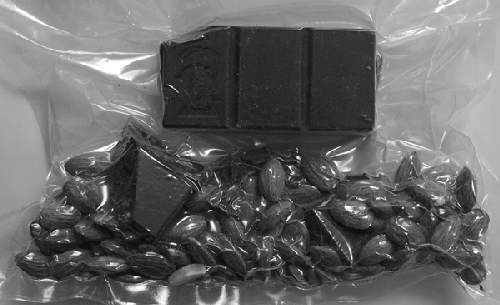
After the chocolate is thoroughly melted, work the bag to distribute the chocolate
and flavorings. You can use a rolling pin to work the fillings around if using
something like nuts.
Let bag rest on counter to cool.
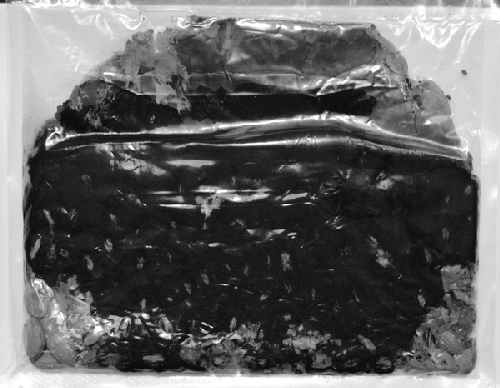
Once cooled, snip the bag open and peel it off the chocolate. You can break the
bar up into pieces.
Try using coffee beans (yum), candied grapefruit rind, dried fruits such as
cranberries, or a mix of toasted nuts (almonds, pistachio, and pecans, and maybe a
pinch of cayenne pepper).
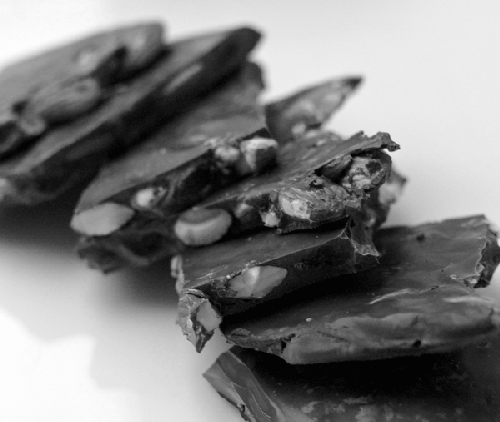
...or How to Void
Your Warranty in Three Easy Steps
Once you have a sous vide setup, you also have most of the tools needed to do
flash pickling. In the culinary world, flash pickling refers to
submerging a food item in a liquid-filled container, evacuating the container, and
then repressurizing the container. Unlike traditional pickling, which requires time
(or heat) to coerce the pickling liquid into the food, flash pickling is instant,
hence its name.
Under vacuum, microscopic air pockets in foods like sliced apples and cucumber
wedges lose their air. Upon returning to atmospheric pressure, the food expands back
out to its original shape, a bit like a sponge. But because the food is submerged,
liquid is pulled back in, instead of air. Why bother? Because “Manhattan apples” (use
whiskey) or “martini pickles” (use gin) are just plain awesome.
Cucumbers being flash-pickled in gin using a consumer jar sealer
attachment.
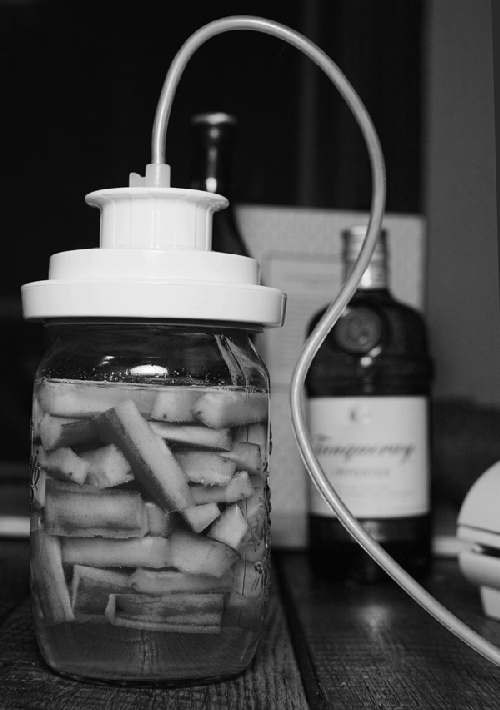
The pros, who use commercial vacuum chambers, can just drop the food into the
liquid bath and clamp down on the lid. For the rest of us, though, generating a
sufficiently strong vacuum isn’t so easy. But if you have a vacuum food sealer and
don’t mind voiding your warranty, there is a way.
Consumer vacuum sealers have a pressure switch that triggers them to stop pumping
and start sealing, meaning that they stop short of creating a strong enough vacuum to
create a good pickle. But if you disable the pressure switch, the unit should continue
to pump indefinitely, or until the motor burns out.
To make a DIY flash-pickling system, start with a consumer vacuum sealer. You’ll
need a toggle switch and an extra piece of wire, along with a screwdriver and wire
cutters.
Start by popping open the vacuum sealer. It should look something
like this.
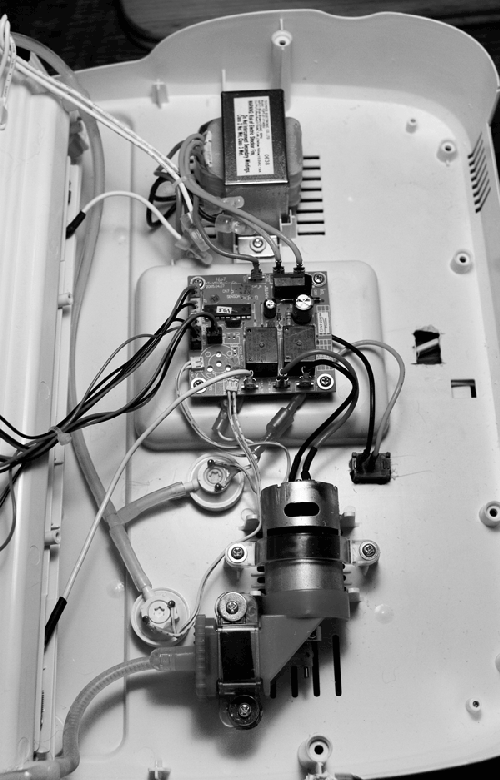
Locate the pressure switch (highlighted on left). Cut one of the
wires that runs back to the circuit board and interpose a toggle switch
(highlighted on right). Cut a small hole in the plastic and mount the toggle
switch so that you can flip it from the outside.